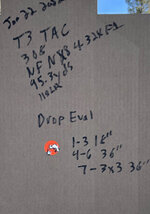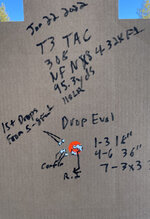- Joined
- Oct 22, 2014
- Messages
- 12,607
Hmm....so the Trijicon Credo didn't fair as well as I'd hoped it sounds like with some POI shifts on drops. Maybe I can wait for the Nightforce NXS to come back in stock.
It has POI shifts, but the groups center remained the same. It certianly isn’t a NF. To be fair, when it comes to zero retention NF is all by themselves from what I’ve seen.


